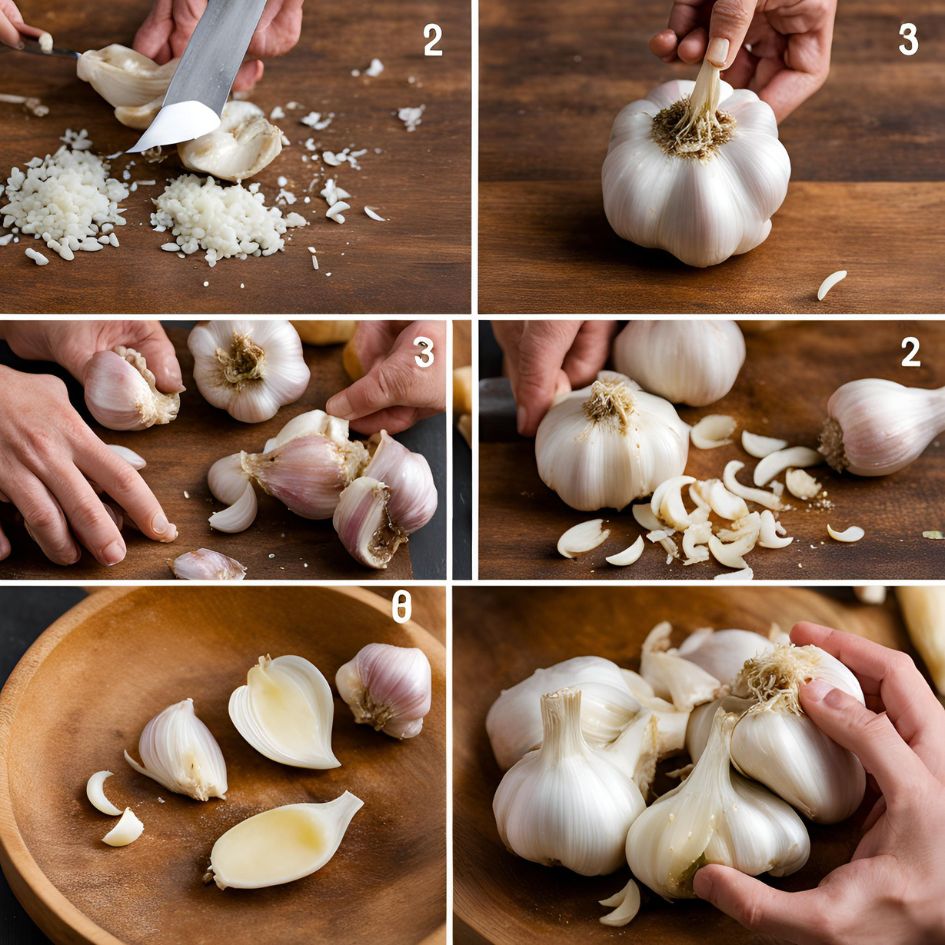Garlic is a staple in kitchens around the world, revered for its potent flavor and numerous health benefits. But when a recipe calls for a clove of garlic, what exactly does that mean? Understanding what a clove of garlic is can enhance your cooking skills and ensure you’re getting the most out of this versatile ingredient. In this article, we’ll dive deep into the anatomy of garlic, its culinary uses, health benefits, and tips for storing and using it effectively. Whether you’re a seasoned chef or a novice cook, this guide will help you master the use of garlic in your kitchen.

What Is a Clove of Garlic?
Anatomy of Garlic
A garlic bulb, also known as a head of garlic, is composed of multiple smaller segments called cloves. Each clove is encased in its own papery skin, and together they form the bulb, which is also covered in a papery layer. The number of cloves per bulb can vary, typically ranging from 10 to 20, depending on the variety and size of the garlic.
Identifying a Clove
To identify a clove of garlic, look for the individual segments that make up the bulb. Each clove is roughly the size and shape of an almond, though this can vary. When you peel away the outer papery layer of the bulb, the cloves will separate easily, each with its own skin that needs to be removed before use.
Types of Garlic
There are two main types of garlic: hardneck and softneck. Hardneck garlic tends to have fewer, larger cloves and a more complex flavor. Softneck garlic, on the other hand, has more cloves per bulb and is generally easier to grow and store. Understanding these differences can help you choose the right type of garlic for your culinary needs.
Culinary Uses of Garlic

Flavor Profile
Garlic’s flavor can range from mild and sweet when cooked to sharp and pungent when raw. This versatility makes it a key ingredient in a wide variety of dishes, from soups and sauces to marinades and dressings. The way you prepare garlic—whether you mince, slice, crush, or roast it—can significantly impact the flavor it imparts to your dishes.
Cooking Methods
- Raw Garlic: Adds a strong, pungent flavor to dishes like salads, salsas, and dressings.
- Sautéed Garlic: Milds the flavor, making it sweet and aromatic. Commonly used as a base for sauces, soups, and stir-fries.
- Roasted Garlic: Transforms into a creamy, sweet spread that can be used in a variety of dishes, from mashed potatoes to bruschetta.
- Crushed Garlic: Releases more of the garlic’s essential oils, providing a more intense flavor. Ideal for marinades and dressings.
Pairing with Other Ingredients
Garlic pairs well with a multitude of ingredients, enhancing the flavors of meats, vegetables, grains, and even some desserts. Classic combinations include garlic with olive oil, tomatoes, basil, and lemon. Experimenting with different pairings can help you discover new and exciting flavor profiles.
Health Benefits of Garlic

Nutritional Profile
Garlic is low in calories but rich in essential nutrients. One clove (3 grams) contains:
- Calories: 4.5
- Protein: 0.2 grams
- Carbohydrates: 1 gram
- Fiber: 0.1 grams
- Vitamin C: 1% of the Daily Value (DV)
- Manganese: 2% of the DV
- Vitamin B6: 2% of the DV
Medicinal Properties
Garlic has been used for its medicinal properties for thousands of years. Modern research supports many of these traditional uses. Key health benefits include:
- Immune System Support: Garlic boosts the immune system, helping to prevent and reduce the severity of common illnesses like the flu and common cold.
- Heart Health: Consuming garlic can help lower blood pressure, reduce cholesterol levels, and decrease the risk of heart disease.
- Antioxidant Properties: Garlic is rich in antioxidants, which help protect cells from damage and may reduce the risk of chronic diseases like cancer.
- Anti-Inflammatory Effects: Garlic has anti-inflammatory properties, which can help reduce the risk of diseases associated with chronic inflammation.
Scientific Evidence
Numerous studies have investigated the health benefits of garlic. For instance, a study published in the Journal of Nutrition found that regular garlic consumption can significantly reduce the risk of cardiovascular disease. Another study in the Journal of Antimicrobial Chemotherapy highlighted garlic’s ability to combat bacterial infections, underscoring its role as a natural antibiotic.
How to Store and Use Garlic

Storing Garlic
Proper storage is key to maintaining the freshness and potency of garlic. Here are some tips:
- Whole Bulbs: Store in a cool, dry place with good air circulation. A pantry or a kitchen counter works well. Avoid refrigerating whole bulbs, as this can cause them to sprout.
- Individual Cloves: Once separated from the bulb, cloves should be used within 10 days. Store in a cool, dry place or refrigerate if you plan to use them within a few days.
- Minced or Chopped Garlic: Store in an airtight container in the refrigerator and use within a week. For longer storage, you can freeze minced garlic in ice cube trays.
Using Garlic in Cooking
- Peeling: Remove the papery skin by placing the clove on a cutting board and applying pressure with the flat side of a knife. The skin should peel away easily.
- Mincing: For a fine mince, chop the garlic repeatedly until it reaches the desired consistency. This method releases the most flavor.
- Slicing: Thinly slice garlic cloves for a milder flavor. Sliced garlic is excellent for stir-fries and sautés.
- Crushing: Use a garlic press or the flat side of a knife to crush the clove. Crushed garlic is ideal for marinades and dressings.
Conclusion
Understanding what a clove of garlic is and how to use it effectively can elevate your cooking and enhance your health. From its rich flavor and versatile culinary applications to its numerous health benefits, garlic is truly a powerhouse ingredient. Incorporate garlic into your daily cooking routine to enjoy its many advantages.

Related Articles :